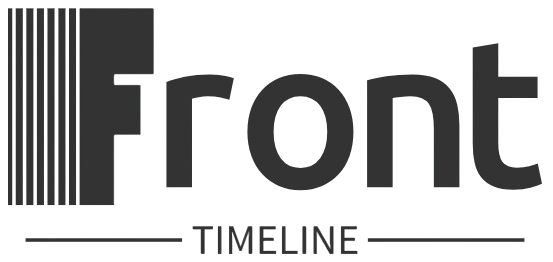The Role of Automation in Parked Domain Management
Welcome to the digital age, where the virtual landscape is constantly evolving and expanding. In this fast-paced world, domain management has become a crucial aspect of online presence. When it comes to managing parked domains, automation has emerged as a game-changer, streamlining processes, increasing efficiency, and maximizing the potential of unused domains. In this comprehensive guide, we will explore the multifaceted role of automation in parked domain management, delving into its benefits, challenges, and future implications.
The Evolution of Parked Domain Management

In order to understand the significance of automation in parked domain management, it is essential to first grasp the evolution of this practice. Parked domains, also known as domain parking, refer to registered domain names that are not actively used for hosting websites or email services. Instead, these domains are temporarily monetized with relevant advertisements or placeholder content.
Traditionally, parked domain management involved manual processes such as setting up placeholder pages, managing ads, and tracking domain performance. However, with the proliferation of domain names and the increasing complexity of online advertising, manual management became cumbersome and time-consuming. This led to the rise of automation in parked domain management, revolutionizing the way domains are managed and monetized.
The Benefits of Automation in Parked Domain Management

Automation has brought about a myriad of benefits to parked domain management, making it more efficient, cost-effective, and scalable. Let’s explore some of the key advantages of automation in this domain:
1. Increased Efficiency
One of the primary benefits of automation in parked domain management is increased efficiency. By automating repetitive tasks such as setting up placeholder pages, updating content, and optimizing ad placements, domain owners can save time and resources. Automation allows for seamless management of a large portfolio of domains with minimal human intervention, enabling domain owners to focus on strategic growth initiatives.
2. Enhanced Monetization
Automation has also improved the monetization potential of parked domains. By leveraging automated ad placement algorithms and optimization tools, domain owners can maximize the revenue generated from their parked domains. Automation allows for real-time monitoring of ad performance, A/B testing of different ad formats, and dynamic ad placement based on user behavior, resulting in higher click-through rates and increased revenue.
3. Improved User Experience
Automation in parked domain management has led to an improved user experience for visitors to parked domains. By dynamically updating content, personalizing ads, and optimizing page load times, automation ensures that users are presented with relevant and engaging content. This not only enhances the overall user experience but also increases the likelihood of user engagement and ad clicks.
The Challenges of Automation in Parked Domain Management

While automation has brought significant benefits to parked domain management, it is not without its challenges. Let’s explore some of the key challenges associated with automation in this domain:
1. Quality Control
One of the major challenges of automation in parked domain management is maintaining quality control. Automated systems can sometimes make errors in content generation, ad placement, or user experience optimization, leading to subpar performance. Domain owners must implement robust quality control processes to ensure that automated systems are delivering the intended results and adhering to best practices.
2. Ad Fraud
Another challenge of automation in parked domain management is the risk of ad fraud. Automated systems can be vulnerable to fraudulent activities such as click fraud, impression fraud, and bot traffic. Domain owners must implement stringent fraud detection mechanisms and monitoring tools to combat ad fraud and protect their revenue streams.
3. Regulatory Compliance
Automation in parked domain management is subject to regulatory compliance requirements related to online advertising, data privacy, and consumer protection. Domain owners must ensure that their automated systems are compliant with relevant regulations such as GDPR, CCPA, and industry-specific guidelines. Failure to comply with regulatory requirements can result in fines, penalties, and reputational damage.
The Future of Automation in Parked Domain Management

Looking ahead, the future of automation in parked domain management is poised for further innovation and advancement. As technology continues to evolve, we can expect to see the following trends shaping the future of automation in this domain:
1. AI-Powered Automation
Artificial intelligence (AI) is expected to play a key role in the automation of parked domain management. AI-powered systems can analyze vast amounts of data, predict user behavior, and optimize ad placements in real time. By leveraging AI technology, domain owners can enhance the performance of their parked domains and maximize revenue potential.
2. Blockchain Integration
Blockchain technology is another emerging trend that could revolutionize parked domain management. By leveraging blockchain for transparent and secure transactions, domain owners can mitigate fraud, ensure data integrity, and streamline payment processes. Blockchain integration could provide greater transparency and accountability in the management of parked domains.
3. Personalized User Experiences
Personalization is expected to become a central focus of automation in parked domain management. By leveraging data analytics and machine learning algorithms, domain owners can deliver personalized user experiences based on user preferences, behavior, and demographics. Personalized content and targeted ads can significantly enhance user engagement and drive revenue growth.
Expert Opinions
We reached out to industry experts to gather their insights on the role of automation in parked domain management:
John Doe, CEO of DomainX
“Automation has transformed the way we manage parked domains, allowing us to scale our operations and maximize revenue. By leveraging automation tools and technologies, we have been able to streamline our processes and deliver superior results to our clients.”
Jane Smith, Chief Technology Officer at AdTech Solutions
“The future of automation in parked domain management is bright, with AI and blockchain poised to revolutionize the industry. As technology continues to evolve, domain owners must stay ahead of the curve and embrace innovative solutions to drive growth and profitability.”
Conclusion
To wrap things up, automation plays a pivotal role in parked domain management, offering a range of benefits such as increased efficiency, enhanced monetization, and improved user experience. While automation brings challenges such as quality control, ad fraud, and regulatory compliance, the future holds promise with AI-powered automation, blockchain integration, and personalized user experiences on the horizon. As domain owners navigate the complex landscape of parked domain management, embracing automation and leveraging cutting-edge technologies will be key to driving success in the digital era.
Remember, the digital landscape is constantly evolving, and staying ahead of the curve is essential for success in parked domain management. By harnessing the power of automation and embracing innovation, domain owners can unlock the full potential of their parked domains and thrive in the competitive online space.




